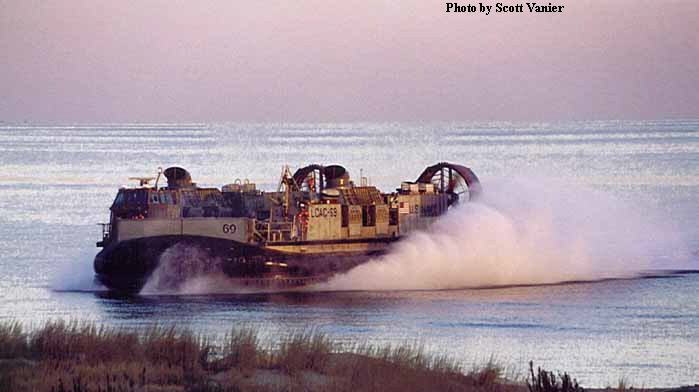
Source
23 April 2003. One of the Eyeball
series.
Source of photos and maps: Mapquest.com
Naval Amphibious Base Little Creek
On July 16, 1942, a Navy truck drove off the scenic Ocean View-Virginia Beach
highway and stopped in a waterlogged beanfield of the Whitehurst farm. For
days thereafter, trucks loaded with lumber and equipment rolled into the
area in almost continuous succession.
The reason for this mass assault in a beanfield 12 miles northeast of Norfolk
was that early in World War II Navy planners saw a necessity for landing
large numbers of American troops on foreign shores in the face of enemy gunfire.
That such operations would be difficult was also evident. New methods and
techniques in landing troops would have to be developed. Training would be
needed before sufficient men were proficient in the complicated art of the
amphibious assault, which would enable U.S. troops to drive to the heart
of the enemy.
During the early phases of World War II the base was literally a combination
of farmland and swamps. Four bases were constructed on this area-Camp Bradford,
Camp Shelton, U.S. Naval Frontier Base, and Amphibious Training Base.
Camps Bradford and Shelton were named for the former owners of the land.
At first Camp Bradford was a training base for Navy Seabees, but in 1943
it was changed into a training center for the crews of LSTs (landing ship
tank).
Camp Shelton was an armed guard training center for bluejackets serving on
board merchant ships as gun crews. At the end of World War II it served as
a separation center.
The Frontier Base was the forwarding center for Amphibious Force personnel
and equipment destined for the European Theater. The Amphibious Training
Base (also known as "Little Creek") was the center for all types of amphibious
training and the training of ship's crews for LSM (landing ship medium),
LCI (landing craft infantry), and LCU (landing craft utility); LCM (landing
craft mechanized), and LCVP (landing craft vehicle, personnel) boat crews
were also trained at Little Creek.
The early days were hard ones. Techniques of training had to be developed
from scratch. Facilities for the upkeep of equipment as well as living facilities
for personnel were primitive. The newcomers found few buildings and practically
no roads or utilities. Just bean vines. The men assigned found it difficult
to get their white uniforms clean because there was so much foreign matter
in the water; there was no such luxury as hot water so the men had to do
their best with cold water and soap powder. After various improvisations
along came temporary buildings that were later to give the site some resemblance
to a naval base.
The men worked long hours in blistering heat in the summer and the penetrating
wet cold of winter. They worked in mud and sand. After long hours of training
many of them performed extra duties on their own initiative which slowly
resulted in improved living conditions.
In a commendably few months the trained men who were to land fighting forces
from Africa to Normandy were ready for sea. During World War II over 200,000
Naval personnel and 160,000 Army and Marine Corps personnel trained at Little
Creek.
The four bases were partially inactivated at the end of hostilities of World
War II. Shortly thereafter, however, the bases at Little Creek, because of
their central location on the Atlantic coast, excellent and varied beach
conditions, proximity to the naval facilities of Norfolk, berthing facilities
for amphibious ships through the size of LSTs, and other advantages, were
consolidated into the present installation and renamed the Naval Amphibious
Base, Little Creek with a commissioning date of August 10, 1945. It was
designated a permanent base in 1946
Growing over the years to meet the needs of the Amphibious Force, the base
has developed into one of the most modern in the Navy. Thousands of men and
women from all branches of the Armed Forces, as well as military students
from foreign nations, now pass through the gates of the Naval Amphibious
Base yearly for training in amphibious warfare.
Amphibious warfare adds a crucial measure of leverage to conducting a maritime
campaign successfully. National maritime strategy seeks to deter war if at
all possible, but if deterrence fails, to destroy enemy maritime forces,
protect allied sea lines of communication, support the land campaign, and
secure favorable leverage for termination of hostilities. It is a truly global
strategy, requiring the ability to dominate the world's oceans and the
flexibility of force employment that only naval forces can provide. Naval
forces are viewed as central elements of American military strategy. The
Navy/Marine Corps team provides an effective amphibious striking arm in support
of the national military strategy. Today nearly 13,000 Sailors, Marines,
and civilian employees are assigned to the various stations or attend schools
at the Naval Amphibious Base, Little Creek in support of the Navy/Marine
Corps team.
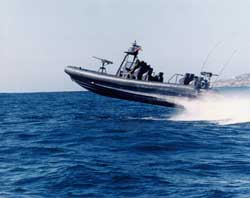
Source
The Naval Amphibious Base, Little Creek is the major operating base for the
Amphibious Forces in the United States Atlantic Fleet. The base is comprised
of four locations in three states, including almost 12,000 acres of real
estate. Its Little Creek location adjacent to U.S. Highway 60 totals 2,120
acres of land. Outlying facilities include 350 acres at Camp Pendleton south
of Virginia Beach and 21 acres known as Radio Island at Morehead City, N.C.,
used as an amphibious embarkation/debarkation area for U.S. Marine Corps
units at Camp Lejeune, N.C.
The mission of the Naval Amphibious Base is to provide required support services
to over 15,000 personnel of the 27 homeported ships and 78 resident and/or
supported activities. The base's combination of operational, support, and
training facilities are geared predominantly to amphibious operations, making
the base unique among bases of the United States and Allied Navies.
The Naval Amphibious Base, Little Creek is the largest base of its kind in
the world.
|
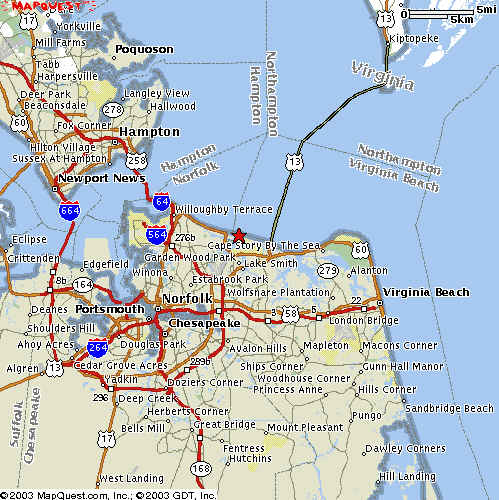 |
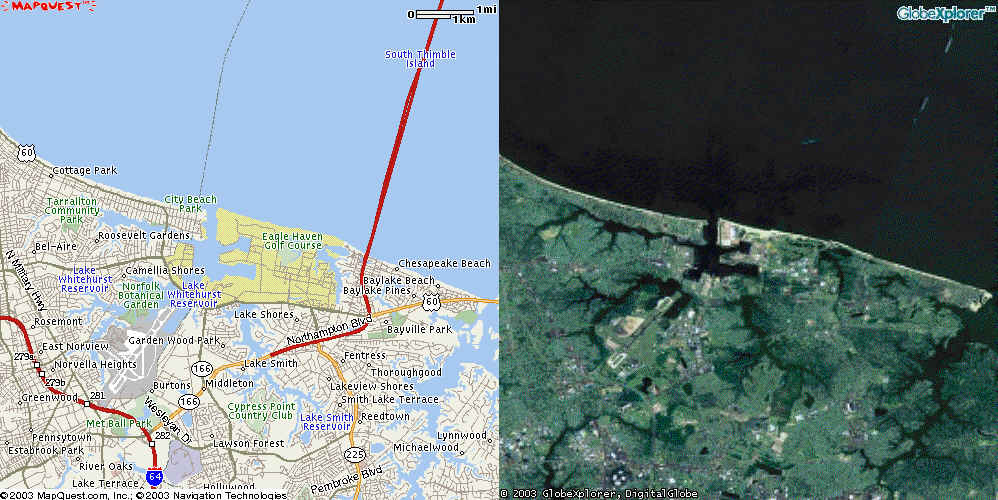 |
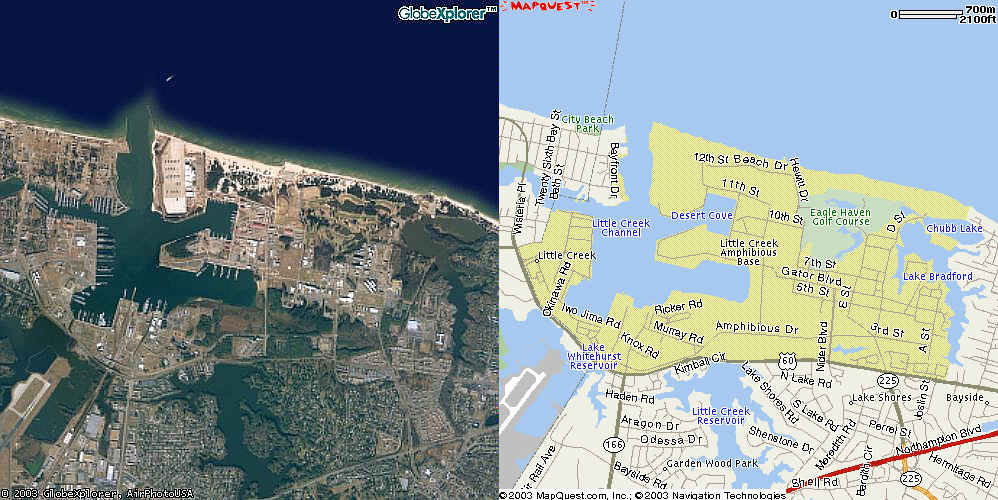 |
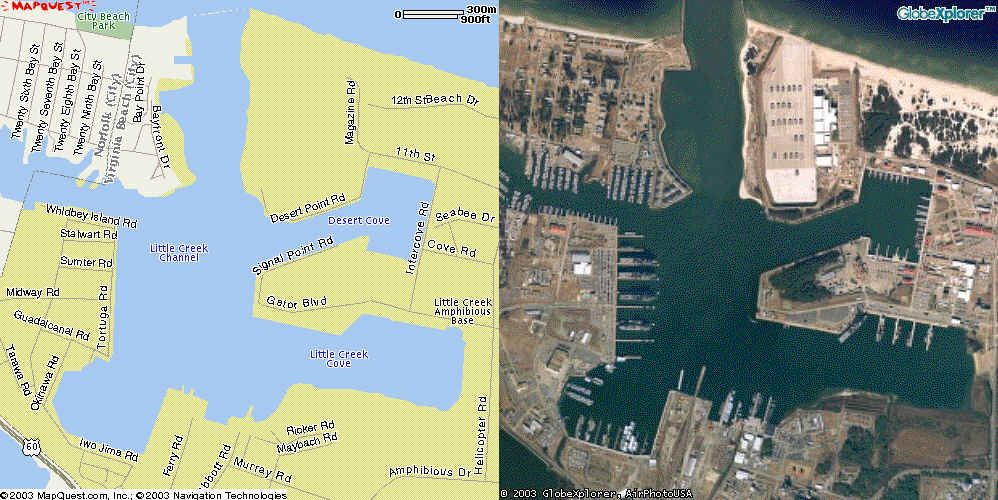 |
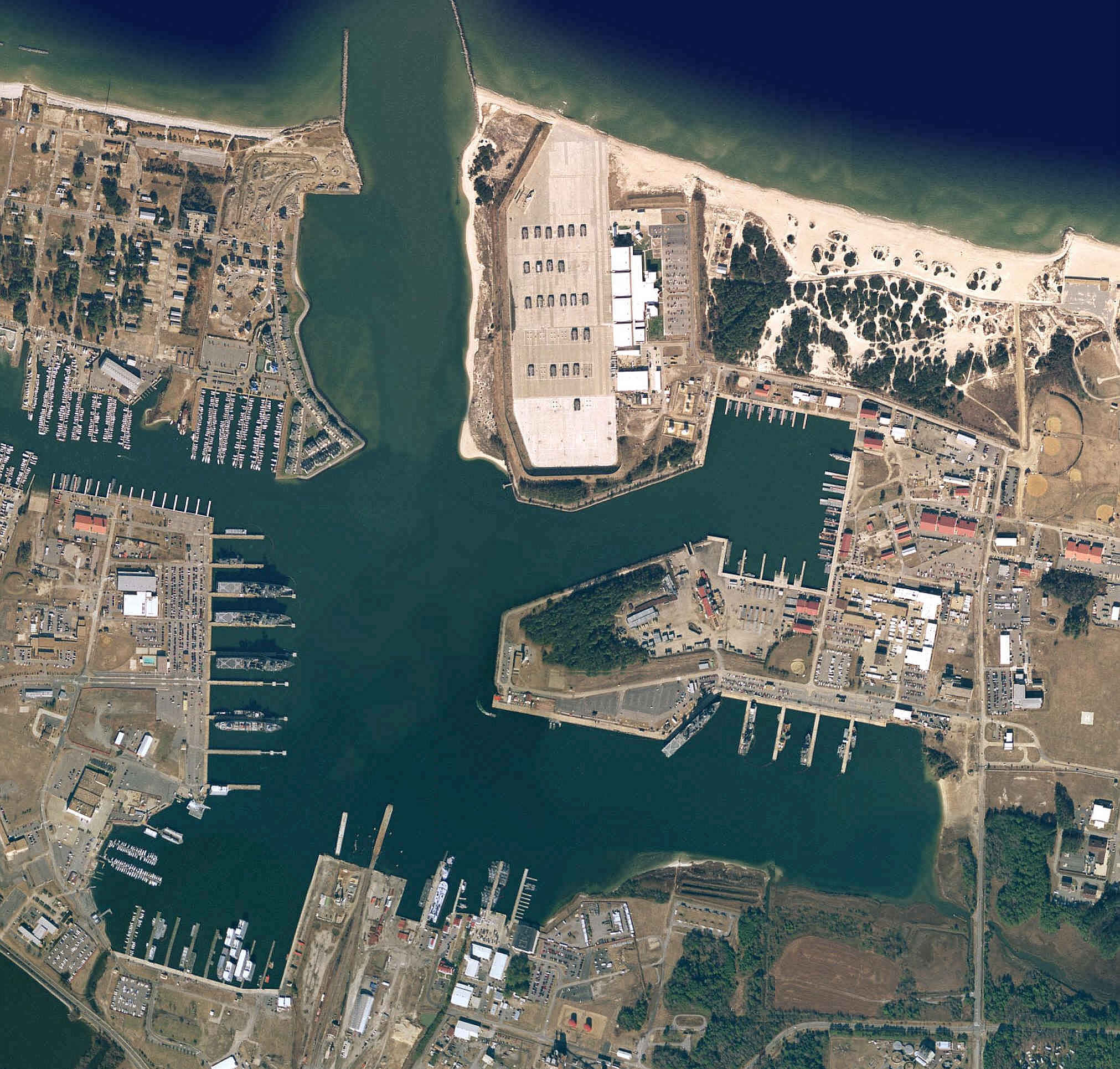 |